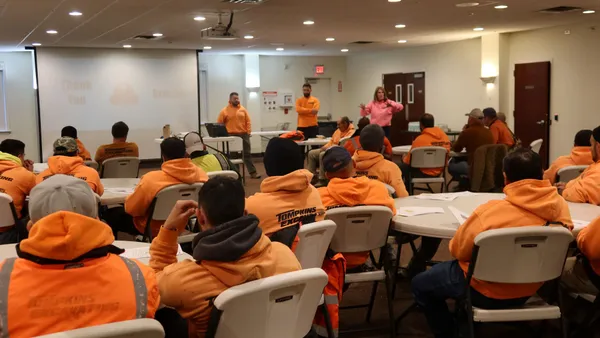UPDATE: Aug. 19, 2019: In a statement to CBC News, Graham Construction said that prosecutors were correct not to pursue charges against the company in relation to the 2016 jobsite death of one of its subcontractor's employees, Eric Ndayishimiye, and called the piece of equipment that hit Ndayishimiye "manifestly faulty."
"The Crown [court] would have carefully considered the issue of potential responsibility for the accident and concluded there was no reasonable prospect of conviction in the case of Graham," the company said. "Quite sensibly [the Crown] has focused principally on Pilosio, the [Canada] manufacturer of a manifestly faulty product, a product we believe they have now removed from distribution in Canada.
"Once all of the evidence is heard and tested, including expert evidence, Graham is confident that the merits of the Crown's decision not to proceed against Graham will be obvious."
According to reported testimony from Joey Yusefawich, a salesman for equipment supplier Pilosio SpA, Graham was instructed prior to the accident that the table cart that hit Ndayishimiye needed at least two employees to operate and control it safely because of the potential momentum that could build with the 1,200-pound piece of equipment. When the cart fell and hit Ndayishimiye, only one employee was operating it, according to the government's case. Graham, which was Pilosio's customer, reportedly let Banff Constructors, Ndayishimiye's employer, use the cart without notifying Pilosio.
Dive Brief:
-
Lawyers for two subcontractors charged in an employee jobsite death in Saskatoon, Saskatchewan, have raised questions about why the general contractor, Calgary-based Graham Construction, has not been charged under the Saskatchewan Employment Act as well, the Canadian Broadcasting Company (CBC) reported. Eric Ndayishimiye, an employee of subcontractor Banff Constructors, died in July of 2016 after being struck by a construction lift.
-
A lawyer for Pilosio Canada, the company that provided the lift and a defendant in the case along with Banff, argued that Graham was "a missing link" in the case as Pilosio supplied the piece of equipment that killed Ndayishimiye directly to Graham, which, in turn, provided it to Banff. The judge in the case also said he was curious as to why Graham was not listed as a defendant. The government's lawyer said that Banff is the employer in the case and, as such, the prosecutor made the decision to pursue Banff and Pilosio, the equipment supplier.
-
Banff and Pilosio face a maximum penalty of $1.5 million in addition to a 40% victim surcharge. Banff is charged with failing to take the necessary steps to protect Ndayishimiye's health and ensure that the equipment was handled in a safe manner and Pilosio is charged with failing to ensure the lift was safe when used in accordance with the instructions.
Dive Insight:
In the U.S., there is a good chance that Graham would also be charged if any of its supervisors on the job knew that its subcontractors were acting in an unsafe manner or that the equipment on the project was unsafe. At the very least, it would likely be held responsible under OSHA's joint employer regulations.
In December of last year, a U.S. Appeals Court judge for the 5th Circuit in New Orleans ruled that OSHA can cite general contractors for subcontractor safety violations as a "controlling employer" even if the general contractor's employees are not subjected to hazards. The decision came after former Secretary of Labor Alexander Acosta asked the court to review an OSHA administrative court ruling that said a general contractor could only be held responsible for safety issues that threatened its direct employees.
The case that the 5th Circuit took under consideration was that of general contractor Hensel Phelps' liability for a demolition and excavation sub-subcontractor's unsafe work practices. Allegedly, Hensel Phelps and a subcontractor directed the sub-sub, CVI Development, to work in an unsafe excavation area on a library project in Austin, Texas. An OSHA inspector cited both CVI and Hensel Phelps for related safety violations, and Hensel Phelps contested those citations.














